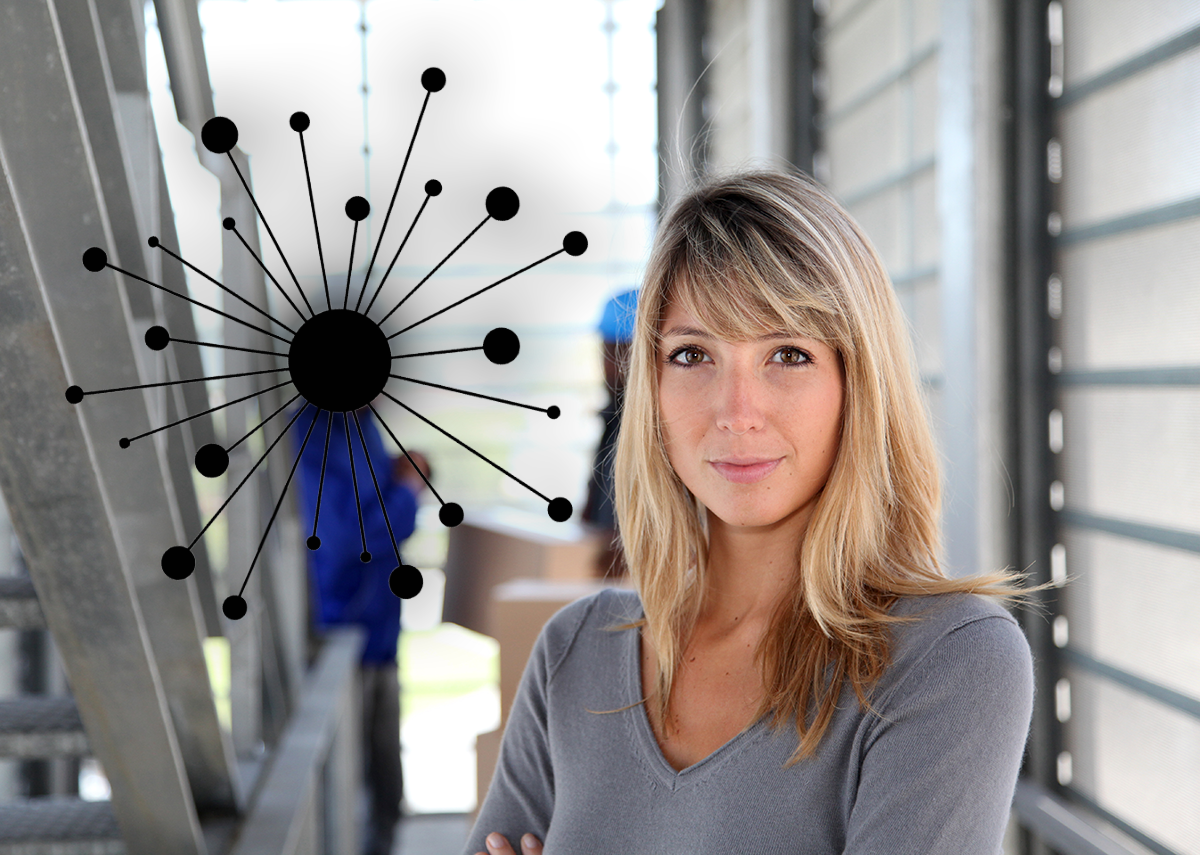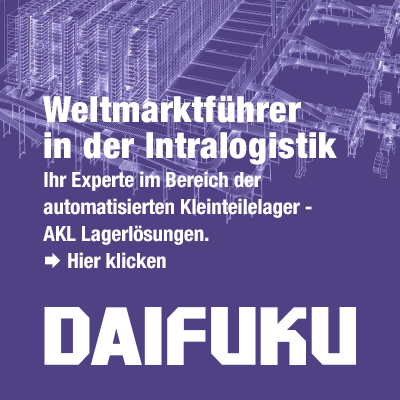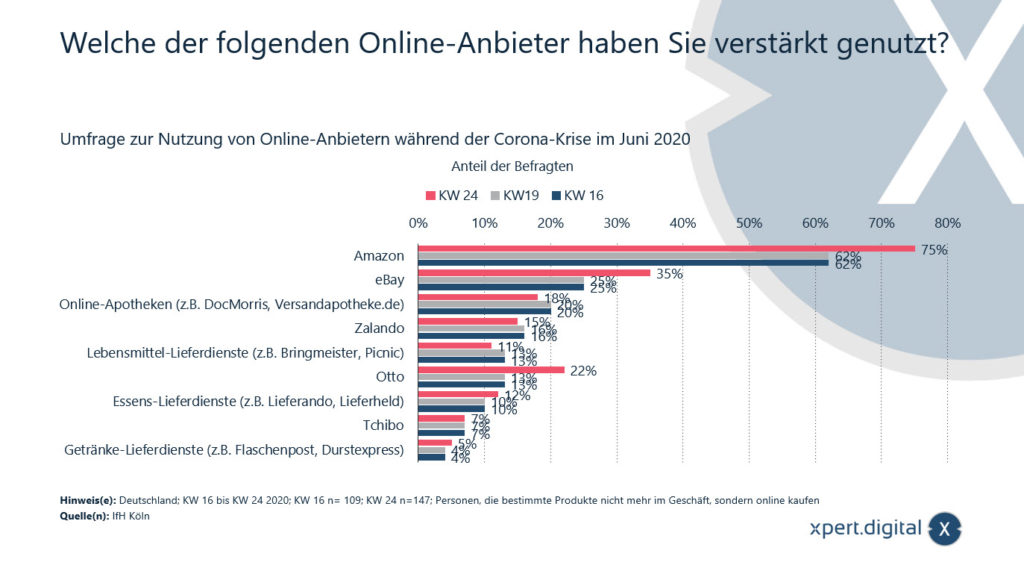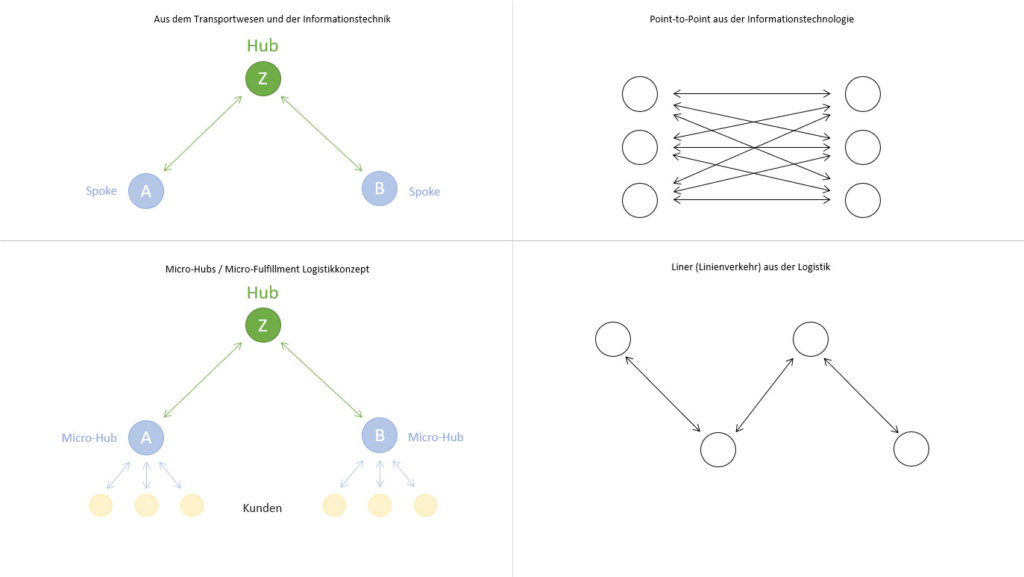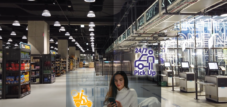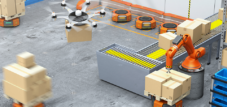Micro-Hub – The key, ingenious solution?
Language selection 📢
Published on: February 22, 2021 / update from: October 2, 2022 - Author: Konrad Wolfenstein
Speed and flexibility are the pacesetters
Logistics never stops. One challenge follows another. Warehouse optimization, process acceleration, cost efficiency, CO2 reduction, automation and competitive pressure. The drivers of this development are e-commerce and Amazon. Amazon is not only one of the largest online retailers in the world, it is also the driver and innovator of many technical innovations that would not exist today without Amazon. The journey from online bookseller in 1994 to today's e-commerce giant is breathtaking.
The only question is, when will the next level, the plateau, be reached, where things will consolidate and we can correct ourselves accordingly?
Also interesting for you?
- Contract logistics – service providers for logistics – 80% of all larger companies use them!
- High-bay warehouse consulting & planning: Automatic high-bay warehouse – optimize pallet warehouse fully automatically – warehouse optimization
Giants like Amazon seem to have overrun the market and left no chance for competition. Ironically, the corona pandemic brought market growth to the big players in the e-commerce industry, while others are struggling with heavy losses and are currently disillusioned about the future. Logistics and intralogistics have done their best, but they are also powerless against the restrictions and pandemic-related forced closures if stationary sales are canceled.
While some are reducing their capacities by planning closures and staff cuts, the winners of the pandemic are expanding their market shares. Already in 2018, according to analysts, 68% of sales in the entire German e-commerce market were generated via Amazon Marketplace and Amazon Vendor.
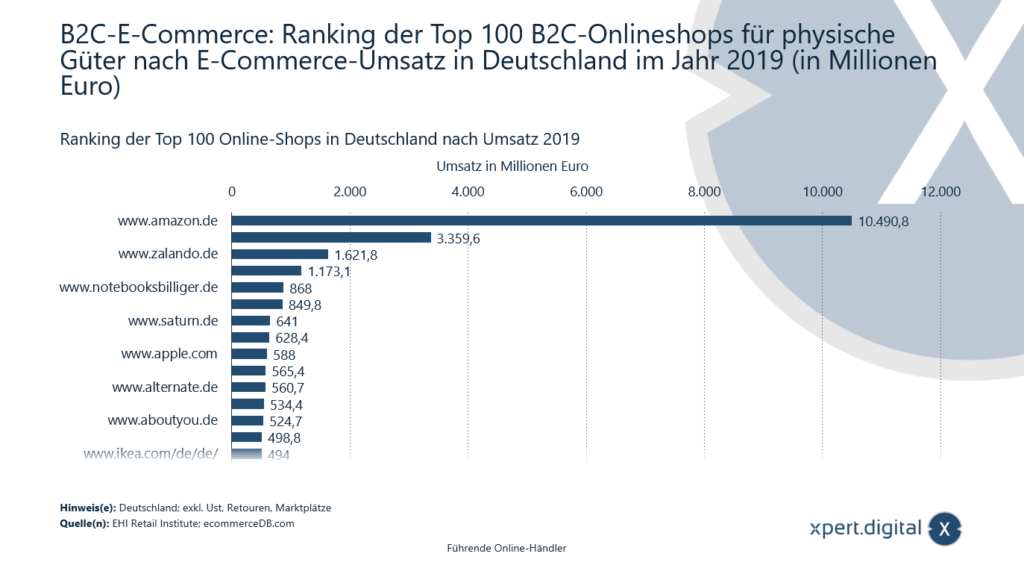
Leading online retailers – B2C e-commerce: Ranking of the top 100 B2C online shops – Image: Xpert.Digital
Media Markt, the specter of the radio-television dealers of yore

Innovative concept: Large-scale specialist stores with a wide range of goods – Image: Birgit Reitz-Hofmann|Shutterstock.com
The first Media Markt opened in Munich in 1979. Media Markt expanded quickly. The business model was simple: large specialist stores with a wide and always up-to-date range at permanently low prices, taking regional demand into account.
This forced many smaller radio and television retailers to give up because they were unable to keep up with Media Markt's price and service offerings. Many shops have disappeared from the cityscape over the years.
It seemed as if Media Markt had the full potential. Similar to Amazon today, except that there was no Internet back then, at the beginning of the 90s all the latest products were almost always in stock and could be picked up straight away, while the simple radio and television specialist retailer had to order the goods first. Usually cumbersome via the wholesaler or the partner sales network.
The success is primarily due to the logistical modernization of the provision of goods. The question was no longer whether the goods were even in stock and available for delivery. It was the beginning of how quickly and flexibly logistics could respond to regional and local demand. Because that was Media Markt's great strength at the time.
Speed and flexibility should become and remain the guideposts of the future.
With the almost endless choice and speed of the Internet, Media Markt Saturn can no longer keep up with its large-scale stationary retail. He makes less sales in all product groups. An expert draws a gloomy forecast if Media Markt Saturn does not intervene decisively in development.
Because Media Markt had completely overlooked the fact that with the Internet and e-commerce something new was emerging on the market that was faster and more efficient than its previous efforts. The former online bookseller Amazon started in 1994 and showed how it works.
Another prime example of the measurement when it comes to speed and flexibility: “We shouldn't worry. Digital photography is not in direct competition for classic at least ten or twenty years. ” 9 years after this statement, Agfa 2005 is insolvent. Only the brand name lives on.
Analysts now see Amazon already having a market share of 68% in the German e-commerce market. Ascending trend.
According to forecasts, e-commerce will account for 15% of retail sales by 2024. The race for the future of the market and retail has only just begun, even if at first glance Amazon seems to be uncatchable in first place.
Amazon will continue to be dependent on third-party logistics infrastructure for the foreseeable future. Just like the entire e-commerce sector in Germany.
The deeper you go into the regional and local market, the more inflexible national logistics centers become. Both central warehouses such as Amazon or fulfillment service providers. Amazon currently has 11 logistics centers in Germany.
Media Markt + Saturn, in turn, have over 425 regional stores in Germany.
Even if a direct comparison is difficult, it is clear that one has something that the other lacks: logistical breadth and e-commerce.
In order to increase speed and flexibility, a good logistical infrastructure (regional & local) in depth as well as a well-established e-commerce is a basic requirement.
In addition, there are 11,235 Aldi stores (North & South), 3,300 REWE stores, 3,200 LIDL stores, 4,273 Netto stores, 2,200 Rossmann stores, over 800 Müller stores, 410 Expert electronics retail locations, to name just a few examples, and the 11 Amazon logistics centers opposite in Germany.
Speed and flexibility are the pacesetters
speed
The goods in stock must be closer to the customer. The closer to the city, for example, the faster delivery is possible. Same-day delivery or even immediate delivery via bicycle courier.
flexibility
Goods available for collection, around the clock. Collection or delivery at any time and much more are the logical conclusions. The restrictions on the range of goods, as previously known from petrol stations, are no longer applicable.
E-commerce
Pre-order, mobile order, flexible purchase of goods and payment, in combination with the points mentioned under flexibility.
automation
Speed and flexibility go hand in hand with high costs for storage and logistics. Extensive cost reductions are only possible through automation of storage, management and distribution of goods.
Autonomization
CO2 reduction through autonomous power supply is another point that logistics must include in its planning. Photovoltaic systems in particular are viewed as the cheapest alternative. Anyone who does not plan and invest in time will have to reckon with additional costs, such as tax for non-renewable energies.
In line with this topic
Topics we have already covered in this regard
- Autonomous retail systems – Micro-Hub best practice
- Logistics acceleration of e-commerce and turbo for smart cities
- Micro-Fulfillment – Crises rarely come alone
- Last Mile Logistics – Facts you should know
Strategic logistics management
- The future of logistics centers
- Networked distribution centers – intralogistics 4.0
- Local decentralized hubs – logistics centers
- Learn from Amazon Logistics
- The growing importance of Amazon's logistics costs
What Asia has ahead of us
- Japan is already working on the future of tomorrow
- Urban growth – How Japan is setting the course for the future
- Urbanization in South Korea
- South Korea is a pioneering online retail market worldwide
- Autonomous retail systems – Micro-Hub best practice
Are micro hubs the solution?
Micro-hubs are considered to play a key role in the future market and smart cities . In general, everything that is related to Smart, be it Smart Factory , Smart Grid and others. It deals with the future topic of how we will deal with our earth's resources and ourselves in the future. Industry 4.0, Internet of Things, digital transformation and artificial intelligence are parts of a whole.
Smart City is about the implementation of digital technologies in urban areas, which ensures the networking of administration, suppliers, households, companies and municipal facilities in the best possible and energy-efficient way.
Micro-hubs are believed to have great potential here because this is where the supply of material goods to people in urban areas can be bundled most efficiently. Especially due to the short supply routes, energy-efficient and environmentally friendly distribution is possible thanks to digital processes.
It is not the person to the goods, but optionally the goods to the people that allows optimal logistical distribution to be organized. How the goods ultimately reach the customer (last mile) is secondary. Energy resources should not be misused, as has been the case for decades, for example by buying a completely oversized car for a small purchase.
What is a hub anyway? And what is a micro hub?
Hubs are used in transportation and information technology. In general, this means that the connection between two end nodes A and B is not routed directly, but via a central node Z.
Hub comes from English and means hub or central point of contact. Germanized : Main turnover basis . _
There are various transport and networking options
- In the point-to-point (direct connection) system, the transport volume must be large enough to enable direct transport.
- The liner (also pendulum or line) system is a classic way of bundling cargo. Suitable for maritime and continental flows of goods.
- In transport, hub and spoke is a star-shaped arrangement of transport routes, whereby these all run to or from a central junction in all directions in order to be able to serve the area (star topology). This system is important for almost all means of transport: road freight transport at all groupage freight forwarding companies in order to be able to offer 24-hour transport (groupage freight) in Germany and 48-hour transport throughout Europe. Another area of application is parcel service providers. Here, the parcels collected in the depots in the secondary route are consolidated in the so-called main route and transferred one stroke turned over. The spokes therefore represent the connections between the hub and the depots. However, you usually find a mixed form of the two network alternatives; depots with a high mutual relationship due to a high packet volume between the two are usually connected through point-to-point connections. also called direct transport, connected to each other. Above all, those parcels whose sender or recipient depots do not account for complete truck loads go through the hub. Overnight service of the city courier services: Since the Deutsche Bundesbahn's appointment service service was discontinued in 1990, regional city courier services have been organizing themselves in various collaborations (Association of German Courier Services, Ilonex, KEP AG, OPS, GO!) and each operate their central transshipment center (HUB) near Bad Hersfeld in Germany. You benefit from the fast “Sprinter” vans and the German motorway network (spoke). Systems with several hubs, which are connected to each other via direct transport, are also possible. An example of this is the GLS Germany network. The company refers to the hubs as “central transshipment points” (ZUP).
- Micro hubs represent an extension or supplement to the previous hub and spoke variant and hybrid form with the point-to-point connection. Strictly speaking, micro hubs represent a mini or micro buffer warehouse of the hub and spoke network, the focus of which is not in lies in the optimal interim storage of goods, but in the diverse digital and physical interfaces to the end consumer: it is the missing component and solution to the “ last mile ” hurdle.
Micro hub
A micro-hub is the next logical step in the development and optimization of logistical processes. It completes the stage from the fusion of online and offline to unified commerce .
The technical implementation of such micro-hubs is not a problem today. Daifuku has already provided such a micro-hub as an Autonomous Retail System (ARS) for E-Mart, the largest retail company in South Korea.
More about it here:
In general, the Japanese are a few steps ahead of us in this development, which is no coincidence, as Japanese society is already considered urbanized, with almost 92% of the total population!
Suitable for:
The requirements for micro hubs already exist in Germany!
Converting the central warehouses of retail companies or logistics centers into micro-hubs would be possible without any major problems. To start with, it is enough to expand just one part of the micro-fulfillment area and adapt it to the market using scaling solutions. For example, existing grocery chains can be converted into micro-hubs or a part of them can be converted into a micro-fulfillment solution.
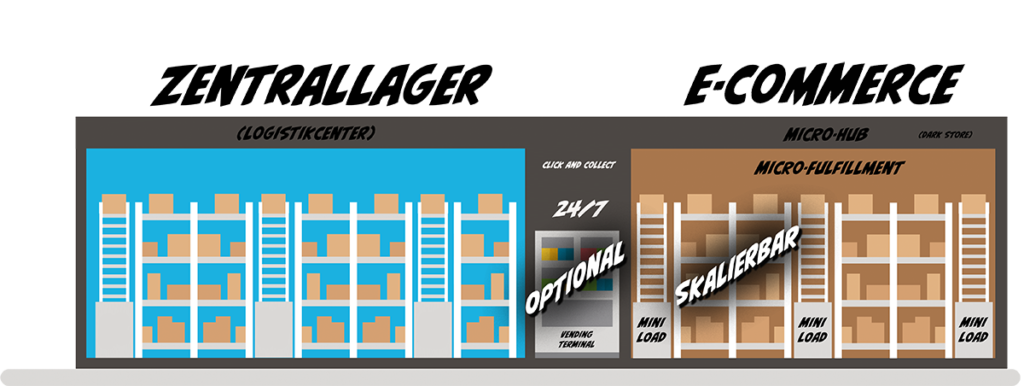
Concept: Autonomous and automated retail systems central warehouse logistics center/e-commerce image: Xpert.Digital
More about it here:
epilogue
To tie in with the story with Media Markt: Are the “small” electronics stores now coming back to the cities as “electrical microhubs” that once had to give up because of Media Markt? From this perspective, does the renaissance of the inner cities appear possible in order to relieve the burden on the green and brownfield areas outside the cities that have previously been used for logistics and industrial centers? Is it possible to calm down the traffic policy in inner cities and highways with the micro hubs?
“Mein”, because it is a very complex topic and we will still pay a lot of tuition for it. However, it is a feasible concept where many city planners have so far desperately desperate.
If we compare the market of the 90s with today, a lot has changed in the last 30 years. We can assume that it will be the same in the coming decades. The world is constantly moving and we have feasible solutions in our hands.
Xpert.Plus – your consulting partner for micro-hub storage systems and solutions: Smart, fully automated small parts warehouses such as high-bay warehouses with Industry 4.0 – IoT technology
Xpert.Plus is a project from Xpert.Digital. We have many years of experience in supporting and advising on storage solutions and in warehouse optimization , which we bundle in a large network Xpert.Plus
I would be happy to serve as your personal advisor.
You can contact me by filling out the contact form below or simply call me on +49 89 89 674 804 (Munich) .
I'm looking forward to our joint project.
Xpert.Digital – Konrad Wolfenstein
Xpert.Digital is a hub for industry with a focus on digitalization, mechanical engineering, logistics/intralogistics and photovoltaics.
With our 360° business development solution, we support well-known companies from new business to after sales.
Market intelligence, smarketing, marketing automation, content development, PR, mail campaigns, personalized social media and lead nurturing are part of our digital tools.
You can find out more at: www.xpert.digital – www.xpert.solar – www.xpert.plus



